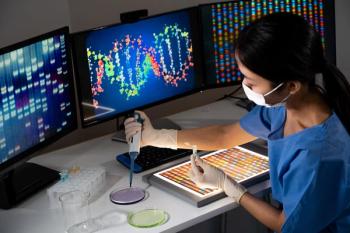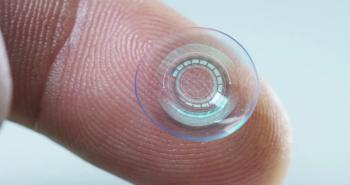
Recognize signs and treatment for patients with persistent PSP
Significant difference from OSD apparent between period of time after surgery, lack of signs
I had surgery on my cervical spine a long time ago. Necessary for that surgery was harvesting an allo-graft from my hip. What I recall about the surgery is how painful my hip was and for how long it bothered me-not my neck.
The technical jargon is persistent post-surgical pain (PPSP). It turns out that PPSP is not all that uncommon, with the incidence up to 60 percent in some types of surgery.
It appears to be most common in breast surgery, amputation, and thoracotomy, and less common in arthroscopic knee surgery and dental implants.1,2
Looking at PPSP
PPSP is not well-studied, and can be confounding, as the symptoms of pain closely mimic those of other ocular conditions-most commonly ocular surface disease (OSD). It is not until these symptoms persist past six months does PPSP begin to enter consideration for the clinician.
It is therefore important not to “jump” to a dry eye diagnosis too aggressively or too soon. It is also valuable to identify when a patient is better diagnosed and treated as PPSP.
Laser in-situ keratomileusis (LASIK) is a common procedure in the United States with a number of reported successful clinical outcomes and overall patient satisfaction.3
Nevertheless, there are side effects from the procedure, mostly in the immediate post-operative period. These can include burning, scratchiness, and discomfort on the ocular surface.4 Symptoms are common to see up to one-month post-LASIK but become far less common at three months after surgery.5
Corneal effects
Both corneal nerves are severed when making the LASIK flap and ablated when treating with the excimer laser.
Corneal sensitivity is decreased initially and returns to normal in most patients between three to 18 months.6
This decrease in corneal nerve firing can lead to decreased basal secretions along with hypoesthesia.
This hypoesthesia is associated with an increase in both symptoms and signs of OSD.7
The prolonged corneal hypoesthesia has been correlated with an increase in symptom severity, often without corneal signs.8
This can lead to persistent pain similar to neuropathic pain syndromes that exit with other body parts.
The concept is called peripheral sensitization and is a result of a nociceptor firing secondary to injury or prolonged inflammation.
This can lead to an alteration in the central nervous system called central sensitization. It is most commonly identified when there is pain but no input causing that pain.8
Patient base
A common complaint of these patients is their eyes hurting when putting in eye drops, including non-preserved artificial tears.
They also tend to be sensitive to wind and cold climates.
Finally, every treatment seems to make them worse-never neutral or better.
These patient types are rare (incidence is unknown).
They do not typically respond to traditional dry eye therapies and are most likely best managed by a pain management specialist in ocular pain or an eyecare provider who has experience working with the patient population.
A challenge of these patients is their tendency to self-refer to local corneal experts, who often dismisses their complaints.
This lack of concern from a “specialist” can further complicate treatment.
Corneal nerves are at the root of this problem. It therefore seems reasonable to evaluate different methods of corneal refractive surgery to determine if any create an increased risk for patients. While there are several studies on hinge position, they have not revealed any differences.9
Femtosecond flaps appear to produce fewer dry eye symptoms and a faster recovery of corneal never sensation.10
Further, since photorefractive keratectomy (PRK) does not utilize a cornea flap, it was theorized that there may be less dry eye. But studies comparing the incidence of dry eye in PRK versus LASIK are mixed at best.11
Comparison
Currently, my discussion with patients prior to LASIK is slightly different. I inform them that all patients experience pain immediately after the surgery.
However, if they go home and sleep for a few hours, they will sleep through the worst of the pain.
Next, I let them know that corneal nerves are damaged during the procedure and that those nerves take months to regain their full function.
Patients may experience corneal sensations similar to their eyes feeling dry during the post-operative period.
An OD will therefore have the patient take artificial tears during the first month to help the cornea heal.
Most often these symptoms are completely resolved by three months. On the rare instance the condition becomes more centralized, and OD has not necessarily inaccurately diagnosed the patient’s condition as “dry eye.”
Cataract surgery
PPSP can also occur in cataract surgery. A study published in Clinical Ophthalmology added pain as end point and found that approximately 7 percent of patients had post-operative pain that persisted for six weeks.12
In a retrospective analysis of post-operative cataract patients at the Miami Veterans Administration, 17 percent of patients were found to have “new” pain six months after uneventful cataract surgery.
This meant that those patients did not have dry eye signs or symptoms prior to surgery. In total, 32 percent of all patients had dry eye symptoms at six months.13
Patients undergoing cataract surgery were found to have significant co-morbidities-mostly due to the age of the population.
Those with a greater risk of dry eye symptoms after cataract surgery included patients with sleep apnea (6.8-fold increase), depression, anxiety, and post-traumatic stress disorder (PTSD).
These conditions are also similar to the risk factors for PPSP in other surgical procedures, such as a mastectomy.14
Both depression and sleep disorders were found to be associated with dry eye conditions, although it was unclear which was the cause and which was the effect.15,16
This same study found that oral ketorolac reduced pain scores greater than narcotic analgesics as well as gabapentinoids (Neurontin, Pfizer Inc.) post-operatively.
A study published in Anesthesiology found that gabapentinoids were successful in reducing chronic post-surgical pain for many surgeries, but cataract surgery was not studied.17
It is believed the effect of gabapentin on injured nerves is a reduction in discharge.
Conclusion
PPSP occurs in many surgeries-including both LASIK and cataract surgery.
In both areas, the patient’s symptoms for PPSP are similar to those of OSD. The main distinction is the period of time after the surgery and the lack of clinical signs to support the symptoms.
If ODs listen carefully to this patient base, the symptoms they describe can be slightly differentiated from that of a patient with OSD.
Finally, consulting with a pain management doctor who specializes in ocular pain can be beneficial for both an optometrist and the patient.
References:
1. McGreevy K, Bottros MM, Raja SN. Preventing Chronic Pain following Acute Pain: Risk Factors, Preventive Strategies, and their Efficacy. Eur J Pain Suppl. 2011; 5:365–372.
2. Kehlet H, Jensen TS, Woolf CJ. Persistent postsurgical pain: risk factors and prevention. The Lancet. 2006 May 13;367(9522):1618-25.
3. Pasquali TA, Smadja D, Savetsky MJ, Reggiani Mello GH, Alkhawaldeh F, Krueger RR. Long-term follow-up after laser vision correction in physicians: quality of life and patient satisfaction. J Cataract Refract Surg. 2014 Mar;40(3):395-402.
4. Shtein RM. Post-LASIK dry eye. Expert Review Ophthalmol. 2011 Oct;6(5):575-582.
5. Shoja MR, Besharati MR. Dry eye after LASIK for myopia: Incidence and risk factors. Eur J Ophthalmol. 2007 Jan-Feb;17(1):1-6.
6. Nettune GR, Pflugfelder SC. Post-LASIK tear dysfunction and dysesthesia. Ocul Surf. 2010 July;8(3):135-45.
7. Levitt AE, Galor A, Weiss JS, Felix ER, Martin ER, Patin DJ, Sarantopoulos KD, Levitt RC. Chronic dry eye symptoms after LASIK: parallels and lessons to be learned from other persistent post-operative pain disorders. Molecular Pain. 2015 Apr 21;11:21
8. Bourcier T, Acosta MC, Borderie V, Borras F, Gallar J, Bury T, Laroche L, Belmonte C. Decreased corneal sensitivity in patients with dry eye. Invest Ophthalmol Vis Sci. 2005 Jul;46(7):2341-5.
9. Feng YF, Yu JG, Wang DD, Li JH, Huang JH, Shi JL, Ye T, Wang QM, Zhao YE. The effect of hinge location on corneal sensation and dry eye after LASIK: a systematic review and meta-analysis. Graefes Clin Exp Ophthalmol. 2013 Jan;251(1):357-66.
10. Salomão MQ, Ambrósio R Jr, Wilson SE. Dry eye associated with laser in situ keratomileusis: Mechanical microkeratome versus femtosecond laser. J Cataract Refract Surg. 2009 Oct;35(10):1756-60.
Newsletter
Want more insights like this? Subscribe to Optometry Times and get clinical pearls and practice tips delivered straight to your inbox.















































